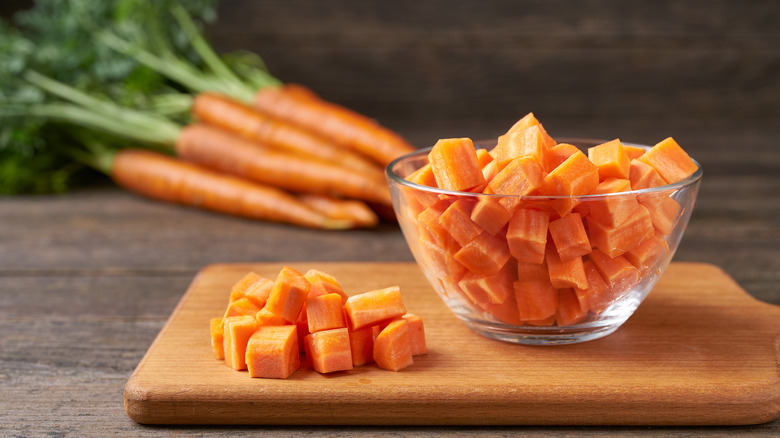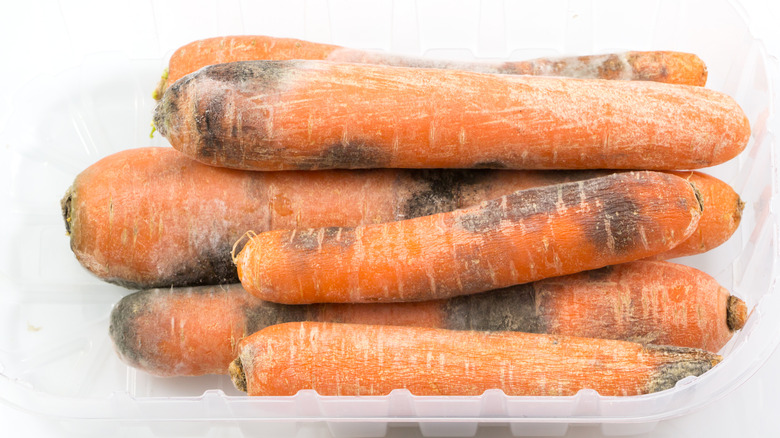Why It's Safe To Eat Some Moldy Carrots
It's frustrating to open up the crisper door in your fridge, only to find that some of the vegetables you were hoping to put in your salad have mold on them.
Molds are fungi that grow on vegetables and other foods. Like other fungi, molds are filamentous and produce spores. As mold proliferates, its filaments can penetrate deep into the food source and spores are produced on the surface. Molds on carrots and other food items produce chemicals called mytotoxins, which can cause us to be sick if ingested (via USDA).
While molds tend to prefer warm temperatures, some are capable of growing inside a refrigerator. In fact, mold spores can accumulate inside a refrigerator and lie in wait for a food supply. As the USDA explains, regularly cleaning your refrigerator with baking soda and water, as well as scrubbing the rubber casings with diluted bleach, is an effective strategy for eliminating mold spores.
But before you toss out those moldy veggies, you may be interested to know that some of them are still safe to eat — as long as you follow the right steps.
Some moldy food can be saved
Some moldy foods are beyond repair, but it is safe to eat some, such as carrots, after removing the area around visible mold.
According to the Mayo Clinic, it is safe to eat carrots and other firm vegetables after cutting at least one inch below and around any mold spots. Carrots, bell peppers, cabbage, potatoes, and similar firm produce have a low moisture content that makes it difficult for mold to achieve deep penetration. Removing the area around any mold spots should be enough to save these vegetables and fruits.
Soft fruits, on the other hand, have a high moisture content. In tomatoes, cucumbers, strawberries, and similar produce, molds are able to achieve deeper penetration. Cutting off visible mold spots from these items may not prevent foodborne illness.
With the exception of nuts, moisture content is generally a good indicator of whether it's safe to cut off mold and save the food item. As Reader's Digest notes, yogurts, jams, soft cheeses, deli meats and similar high-moisture items should be tossed if moldy, while hard cheeses and hard salami can be salvaged.

